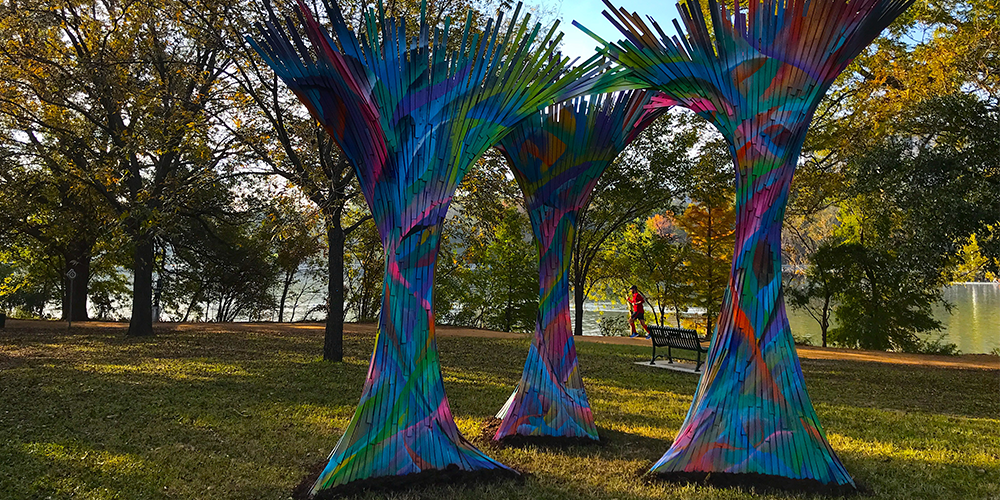Federal park funding reaches underserved communities — but more can be done
Research from UCLA and The Wilderness Society finds that with a few key improvements, federal park funds can bring outdoor recreation to more communities
Edward Rendon Park, Austin. Photo by Cesar Garza / Flickr
Urban parks are crucial for the well-being of city-dwellers, providing benefits such as access to nature and outdoor public space. But after decades of uneven investment, parks tend to be disproportionately located in white, wealthy neighborhoods, while many low-income communities of color have little access to green spaces.
A new policy brief from The Wilderness Society and the UCLA Luskin Center for Innovation explores how federal funding can help close these gaps. The brief examines the Outdoor Recreation Legacy Partnership (ORLP) program, which funds parks in low-income urban neighborhoods across the country. Run by the National Park Service, the program has supported projects in more than 70 communities since it began in 2014.
However, the program has not reached its full potential. The authors found that millions of grant dollars have been left on the table — since 2014, the program has spent less than half of the $220 million that was available for urban parks.
“This program benefits a lot of people, but it can do so much more,” said Ariana Hernandez, associate program manager at the Luskin Center for Innovation. “The money is there. Our research can help figure out how to get it to the communities who need it.”
Through interviews with stakeholders and a spatial analysis of the communities receiving ORLP funding, the researchers identified several recommendations for the National Park Service, park advocates, and state and local government staff to improve the outcomes of this important program.
The primary recommendation is for the National Park Service to continue to make the program requirements and application process more consistent and predictable. Historically, program timelines and criteria have frequently shifted, making it difficult to apply for funds. The National Park Service has already made some changes, but there is room for further improvement.
The authors also recommend the following:
- Codify the program into law through the Outdoors for All Act.
- Create tools to assess park equity, such as an inventory of park access levels, to help target funds toward high-need communities.
- Increase funding for program administration at the federal and state levels.
- Increase technical assistance for the state and local agencies involved in applying for the program.
- Make communication among stakeholders more transparent throughout the process.
“This is the only funding dedicated specifically to urban parks at the federal level, and it’s so important for us to help these resources get to the communities that need it most,” said Kitty Craig, Urban to Wild Director at The Wilderness Society. “Acting on our recommendations will help get all of these dollars to communities most in need, so they can create new parks, refresh old ones, and make transformational investments for the benefit of all.”
Access to parks and green space is a crucial element of environmental equity. Particularly in times of crisis, from the COVID-19 pandemic to ever-increasing heat waves, unequal park access exacerbates the effects of other inequities. The ORLP program is likely to receive even more funding in coming grant cycles, making it increasingly important to ensure that money can be spent on projects that improve park access for those without.
To learn more about the findings, read the policy brief. For more research on park equity, visit our urban greening webpage.








